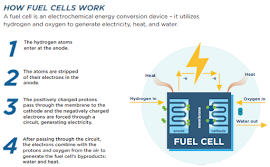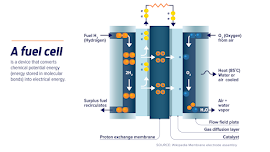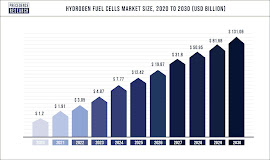A fuel cell is a device that generates electricity through an electrochemical reaction, not combustion. In a fuel cell, hydrogen and oxygen are combined to generate electricity, heat, and water. Fuel cells are used today in a range of applications, from providing power to homes and businesses, keeping critical facilities like hospitals, grocery stores, and data centers up and running, and moving a variety of vehicles including cars, buses, trucks, forklifts, trains, and more.
Fuel cell systems are a clean, efficient, reliable, and quiet source of power. Fuel cells do not need to be periodically recharged like batteries, but instead, continue to produce electricity as long as a fuel source is provided.
A fuel cell is composed of an anode, a cathode, and an electrolyte membrane. A typical fuel cell works by passing hydrogen through the anode of a fuel cell and oxygen through the cathode. At the anode side, a catalyst splits the hydrogen molecules into electrons and protons. The protons pass through the porous electrolyte membrane, while the electrons are forced through a circuit, generating an electric current and excess heat. At the cathode, the protons, electrons, and oxygen combine to produce water molecules. As there are no moving parts, fuel cells operate silently and with extremely high reliability.
Due to their chemistry, fuel cells are very clean. Fuel cells that use pure hydrogen fuel are completely carbon-free, with their only byproducts being electricity, heat, and water. Some types of fuel cell systems are capable of using hydrocarbon fuels like natural gas, biogas, methanol, and others. Because fuel cells generate electricity through chemistry rather than combustion, they can achieve much higher efficiencies than traditional energy production methods such as steam turbines and internal combustion engines. To push the efficiency even higher, a fuel cell can be coupled with a combined heat and power system that uses the cell’s waste heat for heating or cooling applications.
Fuel cells are also scalable. This means that individual fuel cells can be joined with one another to form stacks. In turn, these stacks can be combined into larger systems. Fuel cell systems vary greatly in size and power, from combustion engine replacements for electric vehicles to large-scale, multi-megawatt installations providing electricity directly to the utility grid.
Listed below are a few of the most commonly used fuel cells and the characteristics that make them unique.









0 Comments